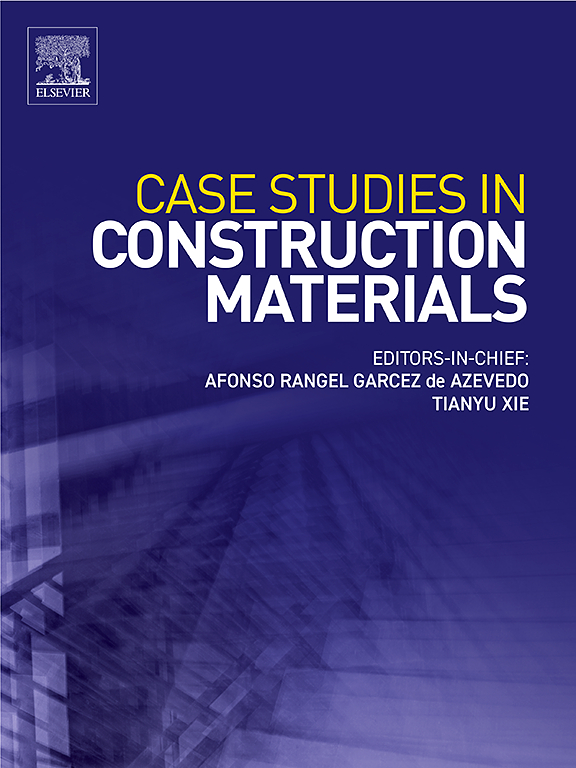Empowering knowledge graphs with hybrid retrieval-augmented generation for the intelligent mix scheme of mass concrete
IF 6.6
2区 工程技术
Q1 CONSTRUCTION & BUILDING TECHNOLOGY
引用次数: 0
Abstract
To achieve precise multi-objective mix design of dam concrete-targeting strength, durability, and crack resistance-this study proposes a Dam Concrete Mix Proportioning intelligent generation System (DCMPS) based on a Retrieval-Augmented Generation (RAG) framework. Firstly, a total of 1723 mix proportioning records collected from 15 hydropower stations were structurally extracted using a customized data transformation tool. A knowledge graph (KG) was then constructed on the Neo4j platform, encompassing entities such as environmental conditions, material compositions, and performance indicators. Secondly, the Moka Massive Mixed Embedding (M3E) model was employed to encode the KG into a vector database, enabling accurate retrieval of relevant mix proportioning cases via cosine similarity calculation. Finally, based on a hierarchical reasoning architecture driven by prompt engineering, DCMPS retrieves relevant cases from the vector database using a semantic search mechanism. A large language model (LLM) conducts comparative analysis on the retrieved cases to generate mix design schemes tailored to specific requirements. The DCMPS’s performance was validated using a test dataset, The results demonstrate that the system outperforms the larger-parameter native LLM in overall evaluation on the test dataset, confirming that knowledge augmentation significantly enhances the performance of smaller models. Case studies indicate that the recommended mix designs closely align with the target performance requirements, and the comparison of relevant cases along with the analysis of material influence mechanisms enhances the interpretability of the results. This DCMPS provides effective technical support for intelligent analysis and engineering decision-making in concrete mix proportioning.
基于混合检索增强生成的大体积混凝土智能配合比知识图谱
为了实现以强度、耐久性和抗裂性为目标的水坝混凝土配合比精确多目标设计,本文提出了一种基于检索-增强生成(RAG)框架的水坝混凝土配合比智能生成系统(DCMPS)。首先,利用定制的数据转换工具对15座水电站的1723条配合比记录进行结构提取。然后在Neo4j平台上构建知识图(KG),包括环境条件、材料成分和性能指标等实体。其次,采用Moka大规模混合嵌入(M3E)模型将KG编码为矢量数据库,通过余弦相似度计算准确检索相关混合比例情况;最后,基于提示工程驱动的分层推理体系结构,利用语义搜索机制从向量数据库中检索相关案例。大型语言模型(LLM)对检索到的案例进行对比分析,生成适合特定需求的混合设计方案。通过测试数据集验证了DCMPS的性能,结果表明该系统在测试数据集上的综合评价优于大参数的本地LLM,证实了知识增强显著提高了较小模型的性能。案例研究表明,推荐的混合设计与目标性能要求密切一致,相关案例的比较以及对物质影响机制的分析增强了结果的可解释性。该模型为混凝土配合比智能分析和工程决策提供了有效的技术支持。
本文章由计算机程序翻译,如有差异,请以英文原文为准。
求助全文
约1分钟内获得全文
求助全文
来源期刊

Case Studies in Construction Materials
Multiple-
CiteScore
7.60
自引率
19.40%
发文量
842
审稿时长
63 days
期刊介绍:
Case Studies in Construction Materials provides a forum for the rapid publication of short, structured Case Studies on construction materials. In addition, the journal also publishes related Short Communications, Full length research article and Comprehensive review papers (by invitation).
The journal will provide an essential compendium of case studies for practicing engineers, designers, researchers and other practitioners who are interested in all aspects construction materials. The journal will publish new and novel case studies, but will also provide a forum for the publication of high quality descriptions of classic construction material problems and solutions.
 求助内容:
求助内容: 应助结果提醒方式:
应助结果提醒方式:


